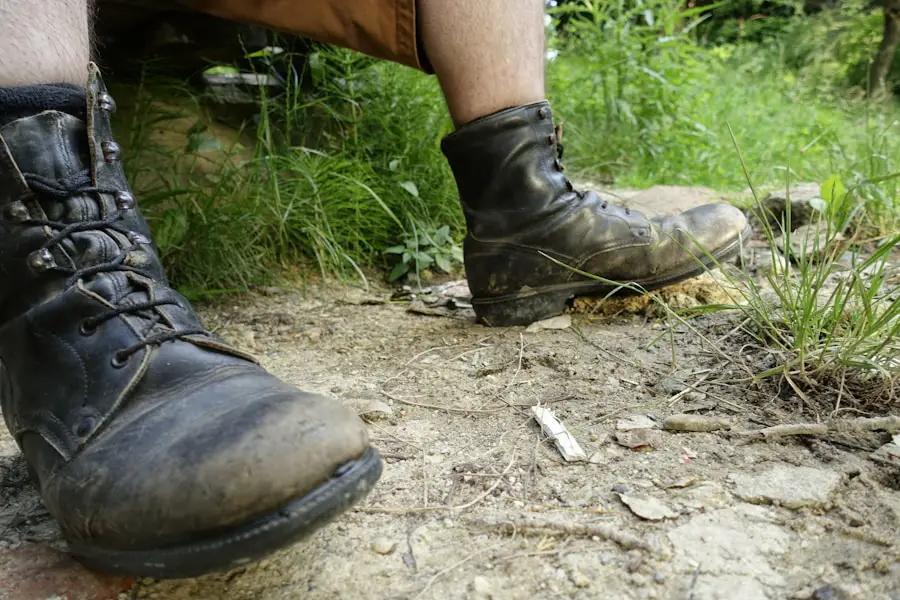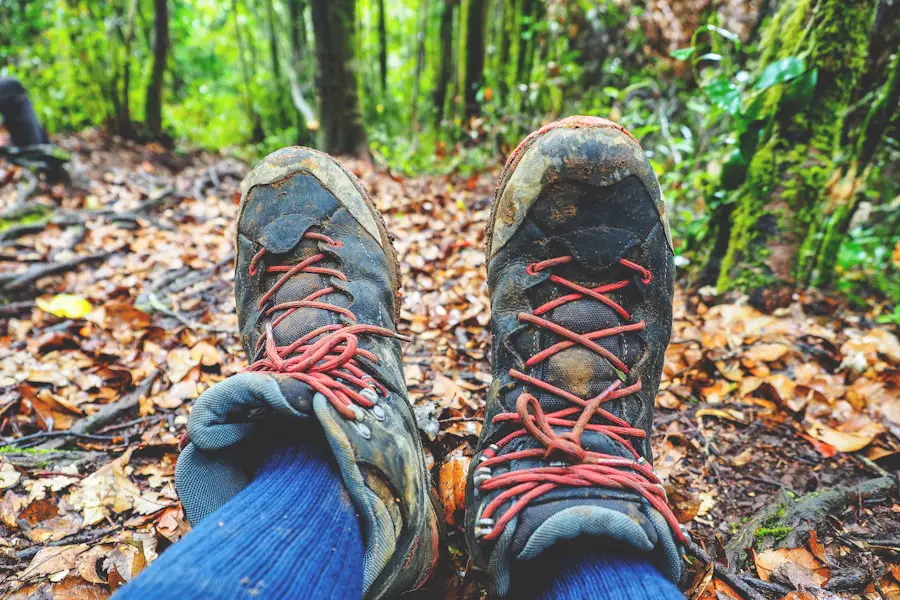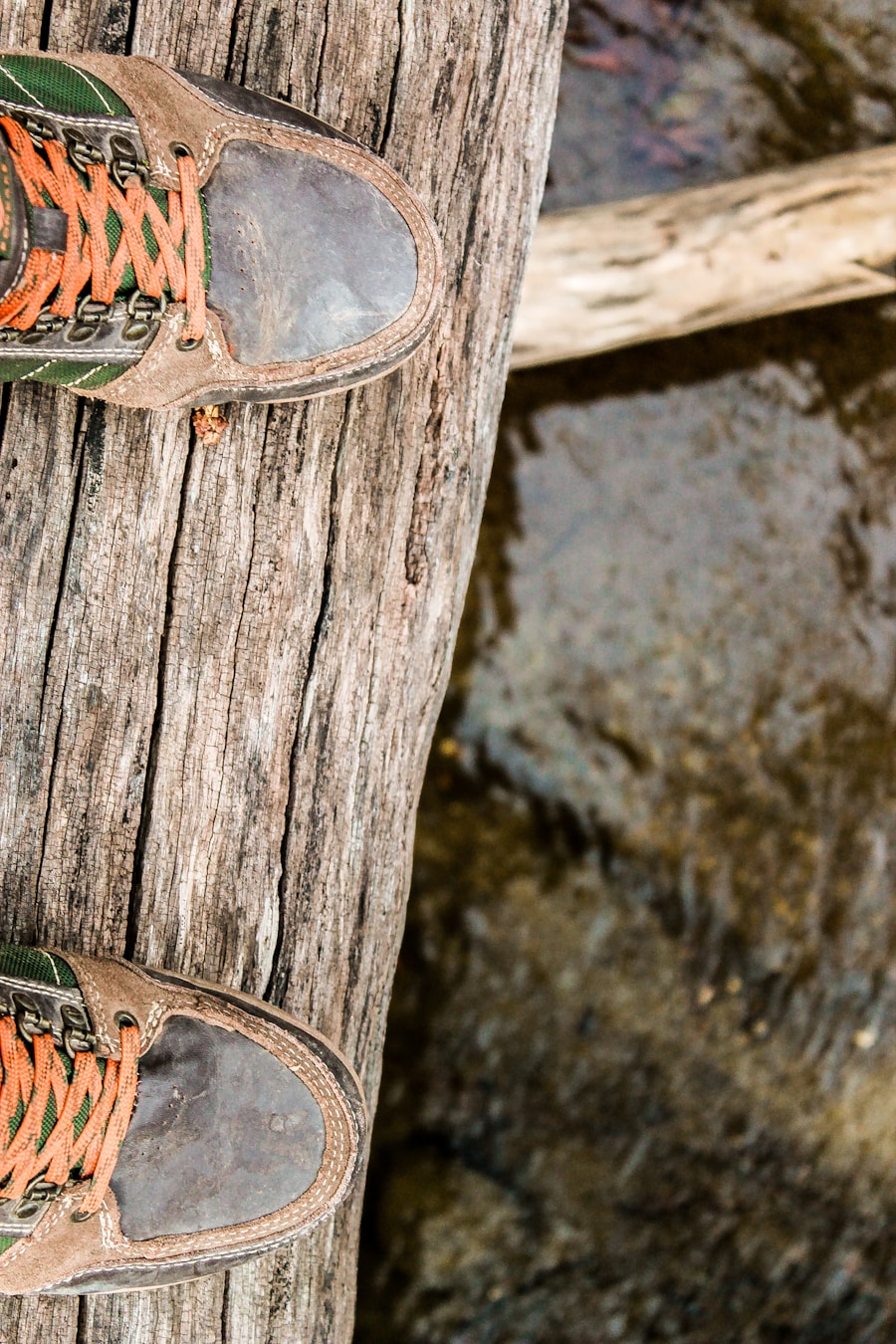Hiking boots are more than just footwear; they are essential gear that can significantly impact your outdoor experience. Clean hiking boots not only enhance your comfort but also ensure your safety on the trails. When dirt, mud, and debris accumulate on the soles and uppers, they can affect traction, leading to slips and falls.
A clean boot provides better grip on various terrains, whether you’re navigating rocky paths, muddy trails, or steep inclines. Moreover, maintaining clean boots can prolong their lifespan, saving you money in the long run. Regular cleaning helps prevent the degradation of materials, which can be exacerbated by the buildup of grime and moisture.
Additionally, clean hiking boots contribute to overall hygiene. When you trek through nature, your boots can pick up bacteria, fungi, and other microorganisms that thrive in damp environments. These pathogens can lead to unpleasant odors and even foot infections if left unchecked.
By keeping your hiking boots clean, you not only protect your feet but also create a more pleasant hiking experience. The psychological aspect of wearing clean gear cannot be overlooked; it instills a sense of pride and readiness for adventure, making you more inclined to hit the trails.
Key Takeaways
- Clean hiking boots are important for maintaining their durability and performance on the trail.
- To clean your hiking boots, remove the laces, brush off dirt and debris, use a gentle cleaner, and air dry them.
- Properly store your hiking boots in a cool, dry place away from direct sunlight to prevent damage and deterioration.
- Maintain the waterproofing of your hiking boots by regularly applying a waterproofing treatment and cleaning off any dirt or grime.
- To deal with odor and bacteria in your hiking boots, regularly air them out, use odor-fighting insoles, and consider using a boot dryer.
How to Clean Your Hiking Boots
Cleaning your hiking boots is a straightforward process that requires minimal tools and materials. Start by removing the laces and insoles from your boots. This allows you to access all areas of the boot more effectively.
Use a soft brush or cloth to remove loose dirt and debris from the surface. For stubborn mud or grime, a damp cloth can be used to gently scrub the affected areas. It’s important to avoid using harsh chemicals or detergents, as these can damage the materials of your boots.
Instead, opt for a mild soap solution made from natural ingredients. Once you’ve removed the surface dirt, focus on the soles of your boots. The treads are crucial for traction, so ensure they are free from any embedded stones or mud.
A toothbrush or a similar small brush can be particularly effective for this task. After cleaning, rinse your boots with clean water to remove any soap residue. Allow them to air dry in a well-ventilated area away from direct sunlight or heat sources, as excessive heat can warp the materials and compromise their integrity.
Storing Your Hiking Boots Properly

Proper storage of your hiking boots is essential for maintaining their shape and functionality over time. After cleaning and drying your boots, store them in a cool, dry place where they won’t be exposed to extreme temperatures or humidity. Avoid placing them in a damp basement or a hot attic, as these conditions can lead to mold growth or material degradation.
Ideally, use a dedicated storage box or a breathable bag that allows air circulation while protecting them from dust and dirt. When storing your boots, consider using boot trees or stuffing them with newspaper to help maintain their shape. This prevents creasing and ensures that the materials do not become misshapen over time.
Additionally, keep your laces untangled and neatly stored alongside your boots to avoid any potential damage. If you have multiple pairs of hiking boots, label them according to their intended use—such as day hikes, backpacking trips, or winter excursions—to make it easier to grab the right pair when adventure calls.
Maintaining the Waterproofing of Your Hiking Boots
| Waterproofing Method | Effectiveness | Duration |
|---|---|---|
| Silicone Spray | Good | 4-6 weeks |
| Wax-Based Waterproofing | Excellent | 8-12 weeks |
| Membrane Lining | Very Good | 6-8 weeks |
| Regular Cleaning and Drying | Essential | N/A |
Waterproofing is a critical feature of many hiking boots, especially for those who frequently trek through wet conditions or snowy environments. Over time, however, the waterproofing treatment can wear off due to exposure to elements and regular use. To maintain this essential feature, it’s important to regularly check the condition of your boots and reapply waterproofing treatments as needed.
Many outdoor retailers offer sprays or waxes specifically designed for this purpose. Before applying any waterproofing treatment, ensure that your boots are clean and dry. Follow the manufacturer’s instructions for the specific product you choose; some treatments may require heating the boot slightly before application to allow for better absorption into the material.
After applying the treatment, allow your boots to dry completely before taking them out on your next adventure. Regular maintenance not only keeps your feet dry but also protects the internal materials from moisture damage.
Dealing with Odor and Bacteria in Your Hiking Boots
Hiking can be a sweaty endeavor, and this perspiration can lead to unpleasant odors and bacterial growth inside your boots. To combat this issue, it’s essential to implement a regular cleaning routine for both the interior and exterior of your footwear. After each hike, remove the insoles and allow them to air out separately; this helps reduce moisture buildup that contributes to odor.
For deeper cleaning, consider using a mixture of water and vinegar or baking soda as a natural deodorizer. Sprinkling baking soda inside your boots overnight can absorb odors effectively; simply shake it out before your next use. Additionally, using antimicrobial insoles can help minimize bacteria growth and keep your feet feeling fresh during long hikes.
If odors persist despite these efforts, it may be time to invest in new insoles or consider replacing your boots altogether.
Repairing and Resoling Your Hiking Boots

Even with proper care, hiking boots can suffer wear and tear over time. Common issues include worn-out soles, damaged eyelets, or frayed seams. Addressing these problems promptly is crucial for maintaining the functionality of your boots.
Many outdoor enthusiasts opt for professional repair services that specialize in hiking footwear; these services can often resole your boots with high-quality materials that restore their original grip and durability. If you prefer a DIY approach, minor repairs can often be handled at home with the right tools. For example, if an eyelet has come loose, you can use a needle and strong thread to sew it back in place.
For small cuts or abrasions in the upper material, specialized adhesive patches are available that can provide a waterproof seal while maintaining flexibility. However, it’s important to recognize when a repair is beyond your skill level; in such cases, seeking professional help is advisable to ensure safety on the trails.
Tips for Extending the Lifespan of Your Hiking Boots
To maximize the lifespan of your hiking boots, consider implementing several proactive strategies beyond regular cleaning and maintenance. First and foremost, choose the right pair of boots for your specific activities; using lightweight boots for rugged terrain can lead to premature wear. Additionally, rotate between multiple pairs if possible; this allows each pair time to rest and recover from moisture and stress.
Another effective strategy is to pay attention to how you use your boots during hikes. Avoid walking on abrasive surfaces whenever possible and try to stick to established trails rather than venturing off into rough terrain that could cause unnecessary damage. Furthermore, investing in quality socks made from moisture-wicking materials can help reduce friction inside the boot, minimizing wear on both the socks and the boot lining.
The Best Practices for Keeping Your Hiking Boots Ready for Adventure
Keeping your hiking boots adventure-ready involves more than just cleaning; it requires a holistic approach that encompasses maintenance, storage, and preparation before each outing. Before heading out on a hike, inspect your boots thoroughly for any signs of damage or wear that may need addressing. Check the soles for adequate tread depth and ensure that all laces are intact and functional.
Additionally, consider weather conditions when preparing for a hike; if rain is expected, ensure that your waterproofing treatment is fresh and effective. Packing an extra pair of laces or insoles in your backpack can also be a lifesaver in case of unexpected issues on the trail. Finally, always allow time for proper drying after each hike before storing your boots away; this simple step can prevent mold growth and extend their usability significantly.
By following these best practices and maintaining a consistent care routine for your hiking boots, you’ll ensure they remain reliable companions on all your outdoor adventures. Whether you’re traversing mountain trails or exploring forest paths, well-maintained hiking boots will enhance both comfort and safety while allowing you to fully immerse yourself in nature’s beauty.
If you’re an avid hiker, you know the importance of keeping your gear in top condition. One essential item to maintain is your hiking boots. To ensure they last for many adventures to come, it’s crucial to know how to clean hiking boots properly. For more tips on outdoor gear maintenance, check out this article on the best travel toothbrush.
Love travel? Join Our Facebook Community
FAQs
What is the best way to clean hiking boots?
The best way to clean hiking boots is to first remove any excess dirt and debris with a soft brush or cloth. Then, use a mild soap and water solution to gently scrub the boots, paying special attention to any stains or heavily soiled areas. Finally, rinse the boots thoroughly and allow them to air dry.
Can I use a washing machine to clean my hiking boots?
It is not recommended to clean hiking boots in a washing machine, as the harsh agitation and detergents can damage the materials and construction of the boots. Hand washing with a mild soap and water solution is the best method for cleaning hiking boots.
How often should I clean my hiking boots?
The frequency of cleaning hiking boots depends on how often they are used and the conditions they are exposed to. As a general rule, it is a good idea to clean hiking boots after every few uses, especially if they have been exposed to mud, dirt, or other debris.
Can I use a leather conditioner on my hiking boots?
Yes, using a leather conditioner can help to maintain the quality and durability of your hiking boots. After cleaning the boots, apply a small amount of leather conditioner and use a soft cloth to gently massage it into the leather. This will help to keep the leather supple and prevent it from drying out and cracking.
How should I store my hiking boots after cleaning?
After cleaning your hiking boots, it is important to allow them to air dry completely before storing them. Once dry, store the boots in a cool, dry place away from direct sunlight and heat sources. It is also a good idea to stuff the boots with newspaper or a boot shaper to help them maintain their shape.
